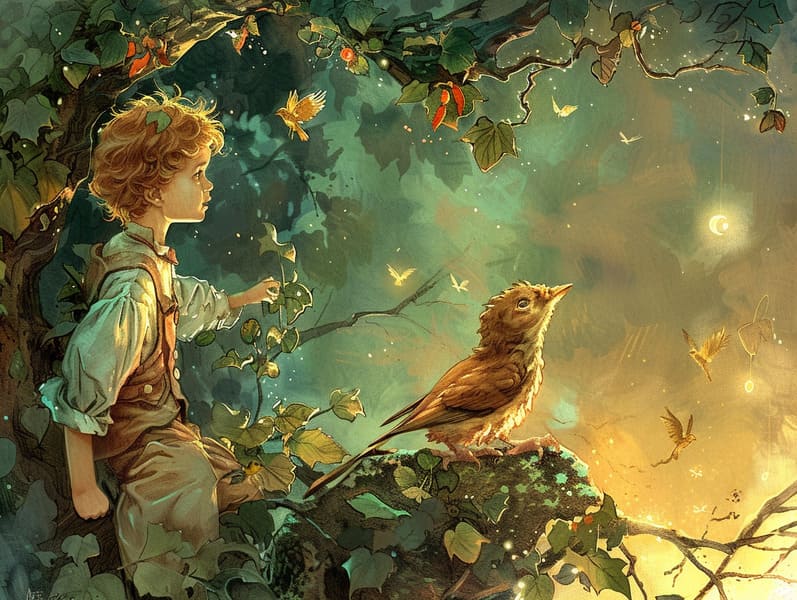The Inception of Mythical Fairy Tales and the Invariable Grandeur.
The Inception of Mythical Fairy Tales and the Invariable Grandeur.
Blog Article

Historical fairy tales have historical significance. These tales have been told from one generation to the next far before they were ever transcribed. They sprang from a variety of cultures, including Western traditions. They were initially told among elders, often carrying themes and messages relevant to the societal norms and beliefs of the time.
The Grimm brothers, Jacob and Wilhelm Grimm, were among the first to collect and release many of these beloved stories. Their published works, "Grimm's Children's Stories," included narratives like "Cinder Maid," "The Bread Crumb Trail," and "Little Snow White," which have since become hallmarks in the world of famous fairy tales. Similarly, the Danish author's enchanting fairy tales, such as "The Mermaid," and "The Ugly Duckling," have gained the love worldwide, guaranteeing their place in the pantheon of famous fairy tales.
Despite being ancient, these stories remain as significant as ever, especially as children's bedtime stories. These delightful tales are now available in various formats, including beautifully illustrated books, whimsical animations, and online storybooks.
Their continued relevance can be attributed to several delightful features:
Important Morals: Traditional fairy tales often present important moral lessons. Narratives like "The Boy Who Cried Wolf" teach the virtue of being truthful, while "The Story of the Tortoise and the Hare" demonstrate the qualities of determination and unpretentiousness. These stories offer children clear distinctions between good and bad, guiding their moral compass in a kind yet impactful way.
Empathy and Understanding: Timeless fairy tales frequently portray figures facing challenges and problems, motivating readers to resonate with their struggles and boost their triumphs. For instance, "The Story of Beauty and the Beast" reveals the importance of seeing inner beauty to acknowledge the real character of a person, strengthening warmth and knowledge.
Cultural Perception: Many old fairy tales are rooted in the cultural contexts from which they sprang. Discovering these tales can provide informative snapshots into different backgrounds, strengthening a sense of global awareness and understanding.
Inventiveness and Fantasy: The magical elements in classic fairy tales—mythical entities—trigger children’s dreaming abilities. These stories carry readers to otherworldly realms, provoking creative thinking and a sense of amazement that stays a lifetime.
Ancient fairy tales are not only fantastical but also edifying. They provide alluring tools in building various intellectual and emotional capacities in the young. When traditional fairy tales are recited, they develop verbal development by bringing new word meanings and detailed sentence structures. This practice also fosters listening skills and mental focus, as children keep up with the story, anxious to see what happens next.
Furthermore, examining the themes and characters of old fairy tales can promote problem-solving abilities and analytical skills. Children are shown to discern patterns, anticipate outcomes, and make sense of cause and effect. These deliberations also aid kids communicate their thoughts and feelings, strengthening their emotional intelligence.
In today’s digital era, the availability of digital fairy tales has made these stories more attainable than ever. Web platforms and apps give comprehensive collections of bedtime fairy tales that can be read or listened on anytime, anywhere. Fairy tales voiced are particularly popular, offering an entertaining method for young readers to be a part of these alluring stories. Voice books and read-out-loud stories move characters and settings to life, often enhanced by delightful musical scores and tunes that amplify the narrative adventure.
The unfading fascination of traditional fairy tales lies in their ability to alter to contemporary times while holding onto their core values. Contemporary modernizations of these narratives often show more varied protagonists and modern settings, making them relatable to today’s audience. However, the main ideas of boldness, kindness, and justice remain unchanged, continuing to appeal to kids of all ages.
Old fairy tales also offer a sense of solace and closeness. They afford a organized narrative with a straightforward beginning, middle, and end, often finishing with the termination of conflicts and the triumph of here justice over injustice. This predictability can be calming for little ones, affording a sense of firmness in an fluid world.
Ancient fairy tales continue to bewitch and guide new generations, maintaining their majesty and relevance in modern society. As bedtime stories for kids, they extend a perfect blend of charm and understanding, boosting moral values, empathy, and creativity. The prevalence of online storybooks and the likability of fairy tales read out loud confirm that these timeless tales remain available to new generations.
By protecting and disseminating these stories, we continue to admire the rich tapestry of narrative artistry and cultural heritage. Whether you are viewing a beautifully illustrated book, accessing a web collection, or listening to an spoken story, the radiance of timeless fairy tales is always within reach. These tales highlight of the everlasting effect of fairy tales and its ability to bind us across epochs and places.
No matter if you are seeing a richly illustrated book, perusing a online library, or listening to an audio story, the attraction of old fairy tales is always within reach.
These tales teach us of the unchanging power of fairy tales and its ability to bind us across eras and regions, weaving a spell that charms and informs alike.